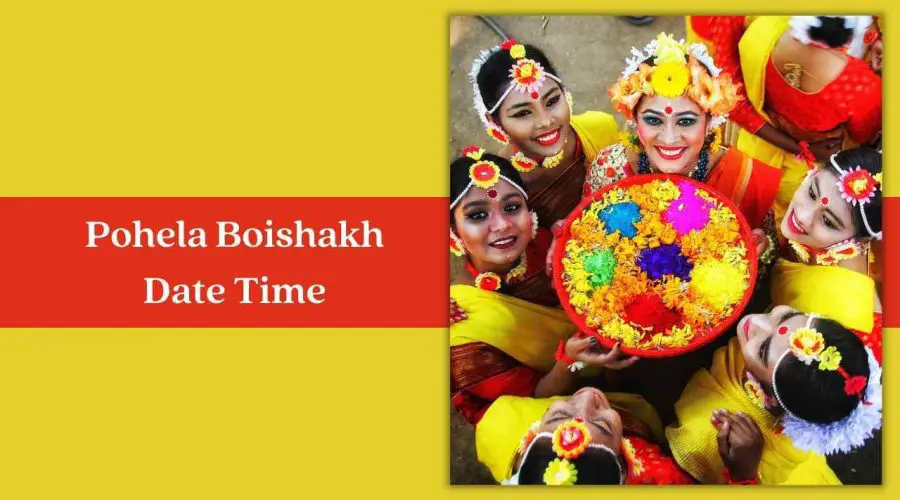Pohela Boishakh 2023 Date, Time, Mela, and Celebrations
Pohela Boishakh, which occurred on April 15, 2023, marked the beginning of a new year for all Bengalis. Before dawn, artists from Chhayanaut (an institution committed to Bengali culture) sing the famed poet and polymath Rabindranath Tagore’s famous song, “Esho hey Boishakh, esho, esho (come Oh Boishakh, come)” (come Oh Boishakh, come) to welcome the first day of the Bengali new year.
Joining the parade of Mangal Shobhajatra — an annual mass procession organized by teachers and students of Dhaka University’s Fine Arts department — are thousands of people carrying giant paper-mache and balloon replicas of birds, fish, animals, folk tale characters, and other cultural symbols through the streets of Dhaka.
The front yards of Bengali residences and the sidewalks of major thoroughfares are adorned with patterns created with rice kernels and designs influenced by traditional folk art. Music and delectable aromas flood the air, while laughing and celebration lengthen the day, providing everyone the perfect opportunity to abandon their everyday obligations and spend the day with their loved ones.
Pohela Boishakh Date
Saturday, 15 April 2023
Pohela Boishakh Mela
Boishakhi melas (fairs/parades) are the most well-liked event of the day. It is the place where community members gather to celebrate the day with their families. Melas are mostly organised locally in villages, where vendors and artists sell a variety of traditional wares, including handcrafted sweets, clay figurines, handmade toys, seasonal fruits and vegetables, handloom sarees, glass bangles, bamboo flutes, and several other items. Currently, among traditional products, these fairs also feature an abundance of branded jewellery. In addition to providing a venue for shopping, fairs also offer entertainment. At designated fairgrounds, circuses, magic shows, chorus singing, and plays are performed.
Celebrations on Pohela Boishakh
- Pohela Boishakh, as well as the full month of Boishakh, is regarded as an auspicious period for weddings in Kolkata.
- On this day, individuals rise early, bathe, and don traditional attire. Men wear red and white dhotis and Punjabis, while women wear red and white sarees with blouses and bright bangles and flowers.
- Nowadays, folks wear new attire and engage in social activities.
- The final month of the preceding year, Choitro, is characterised by busy activities and hurried purchases.
- The garment merchants plan a Choitro sale and offer high discounts on the garments.
- Pohela Boishakh is a time for cultural events. There are prayers for the prosperity and health of the family.
- Young women dressed in white saris with crimson borders and men dressed in dhuti and kurta participate in early morning Probhat Pheri processions to greet the new year.
Conclusion
Pohela Boishakh continues to serve as a source of inspiration for the Bengali people, despite the passage of time causing certain changes. Many Bengalis living in countries such as the United States, the United Kingdom, and Australia observe this holiday. Nowadays, it is the sole celebration that unites all Bengalis, regardless of where they live, the language they speak, or the religion they worship. It is not about extravagant attire, delectable food, or vibrant decorations. It is actually a celebration of the rural roots and heritage of Bengal.

